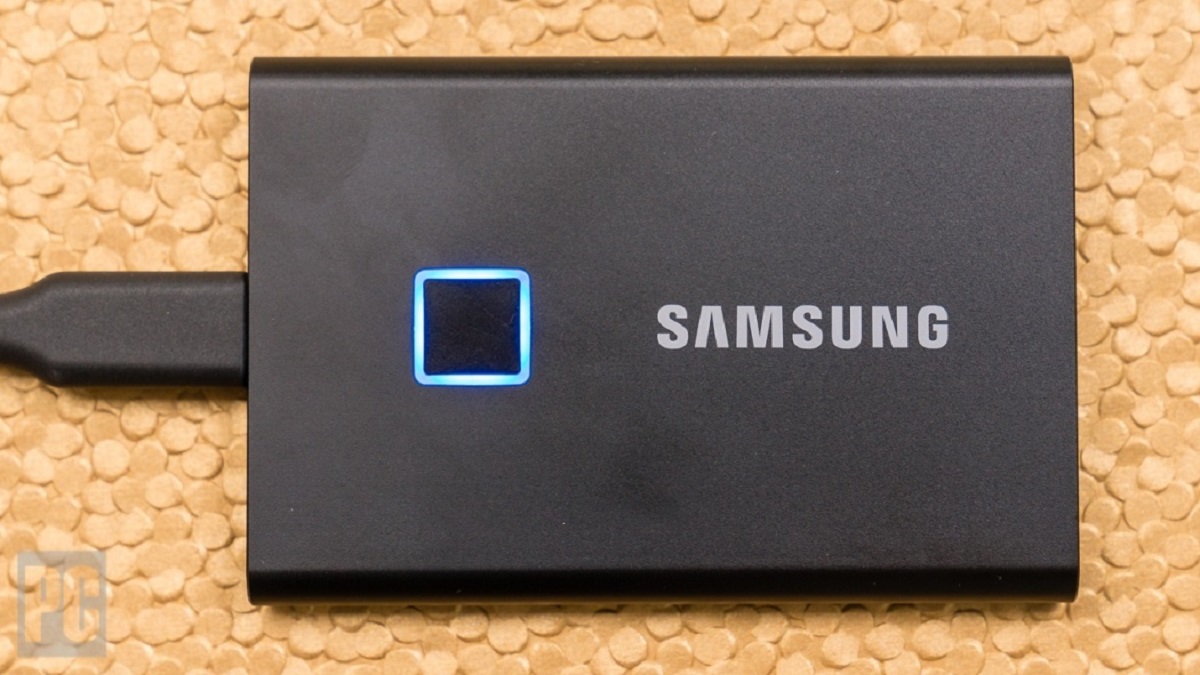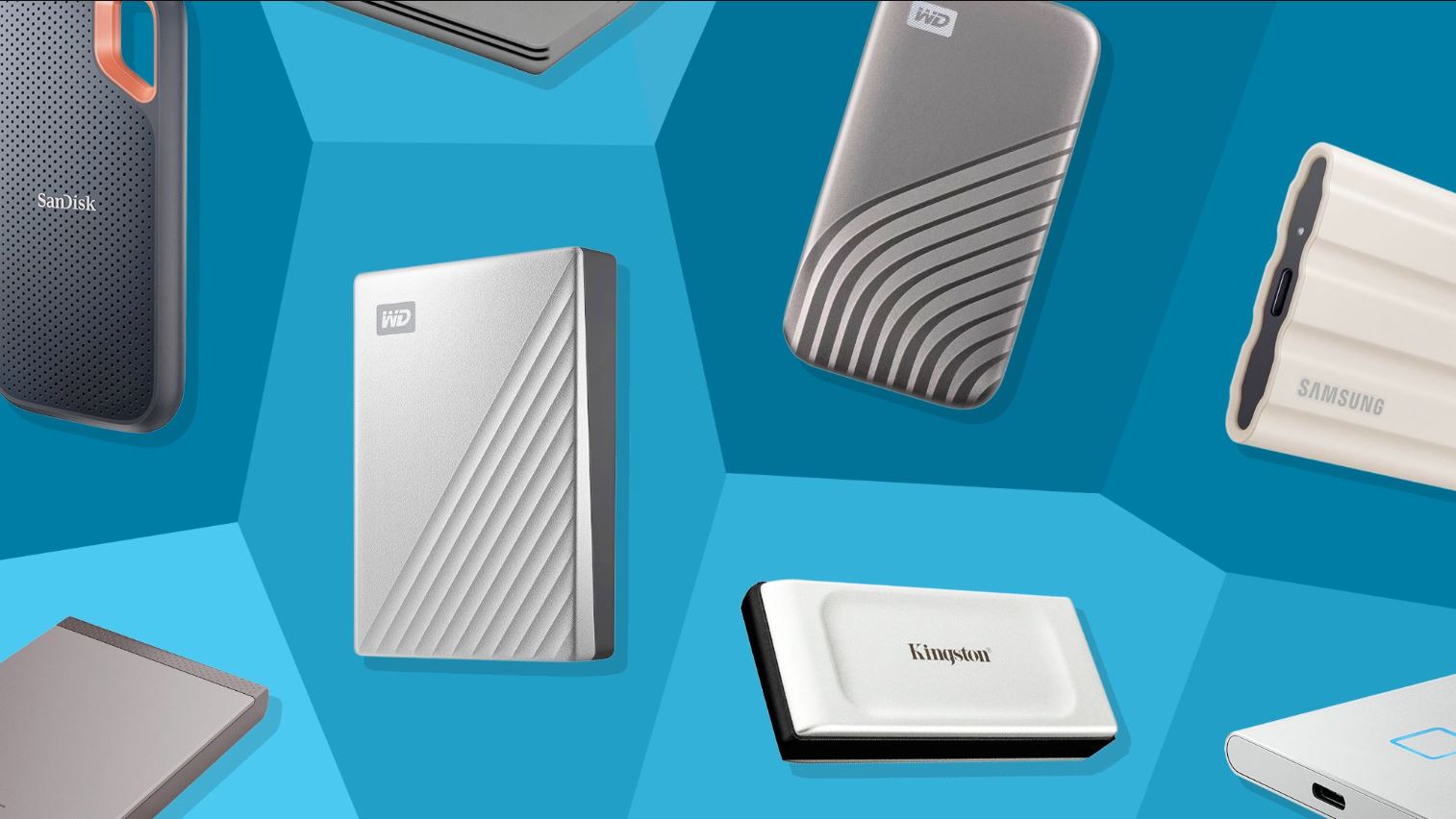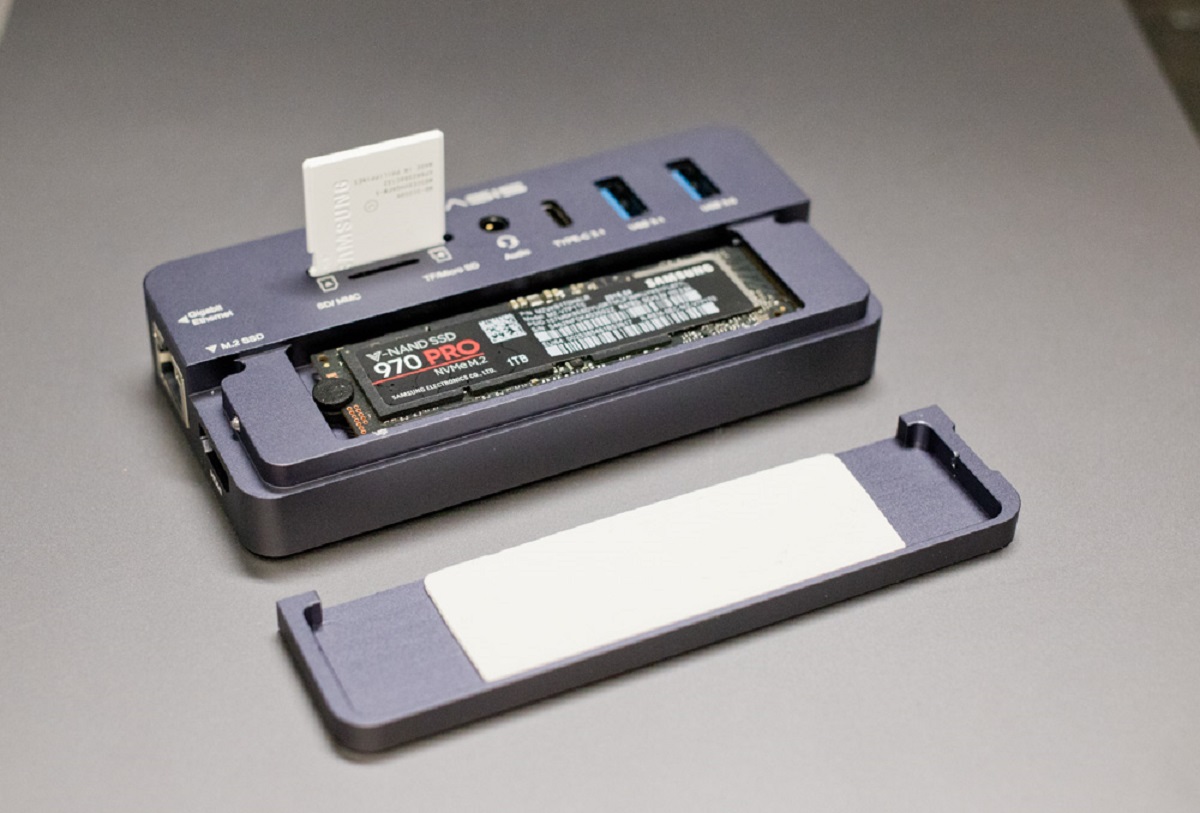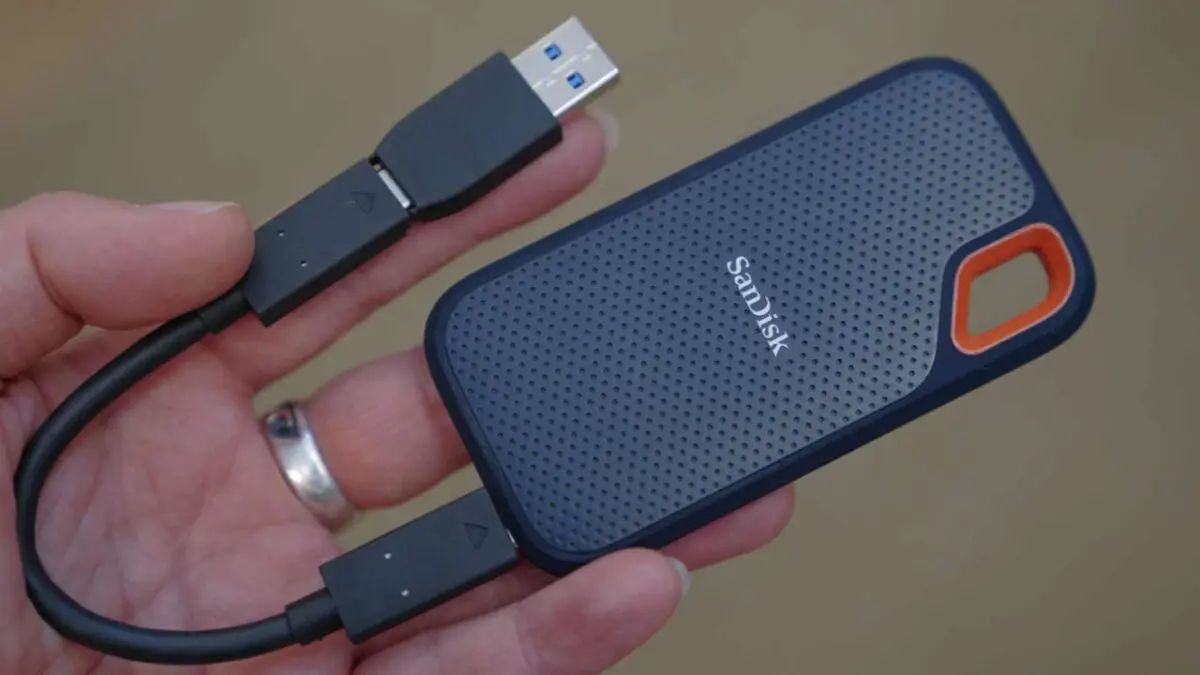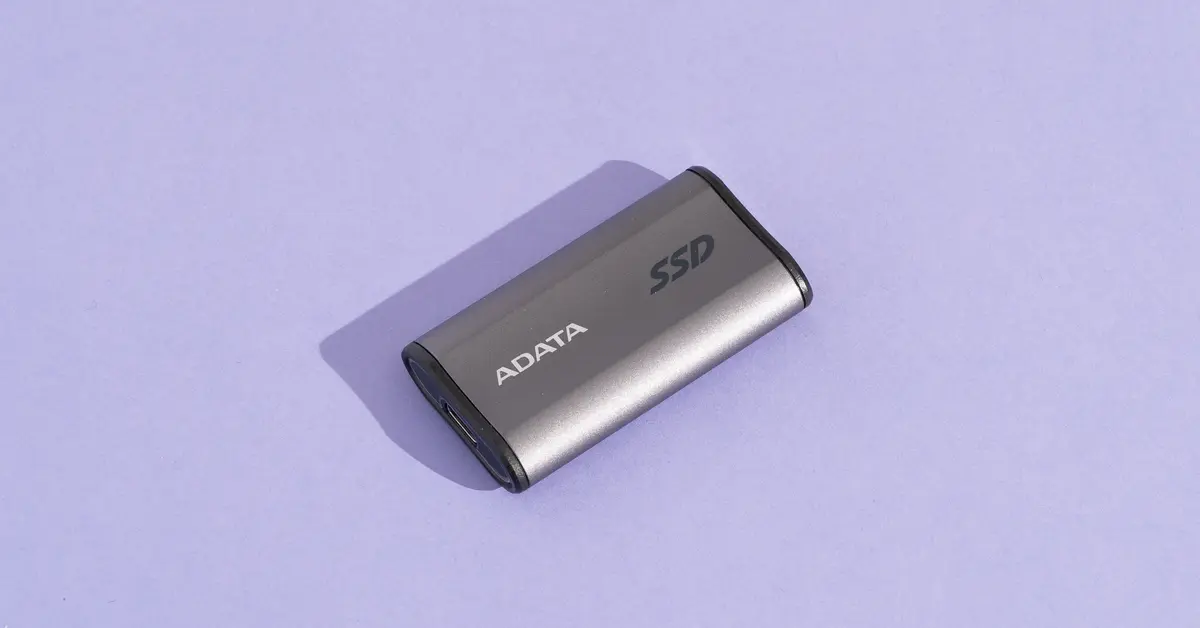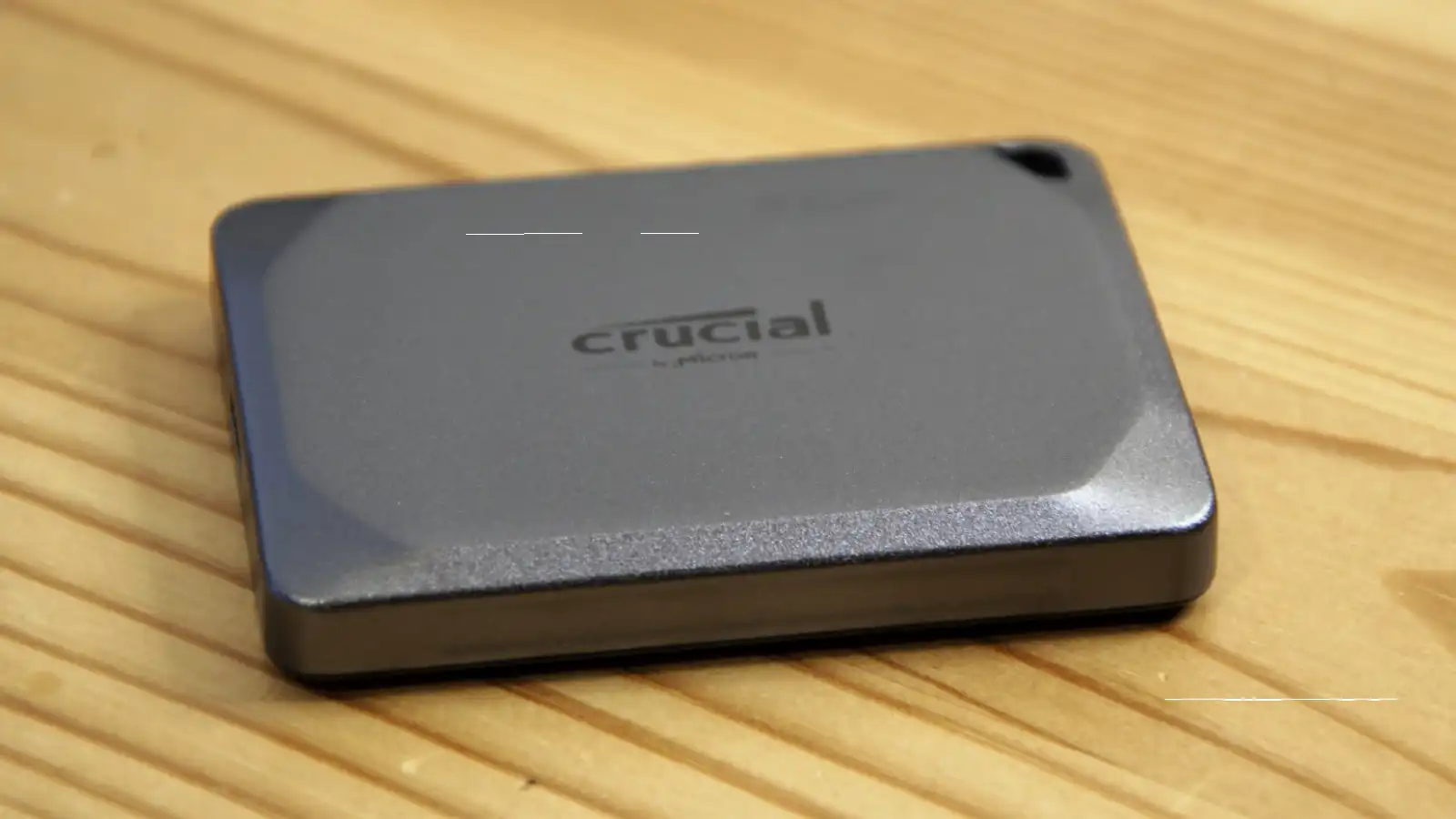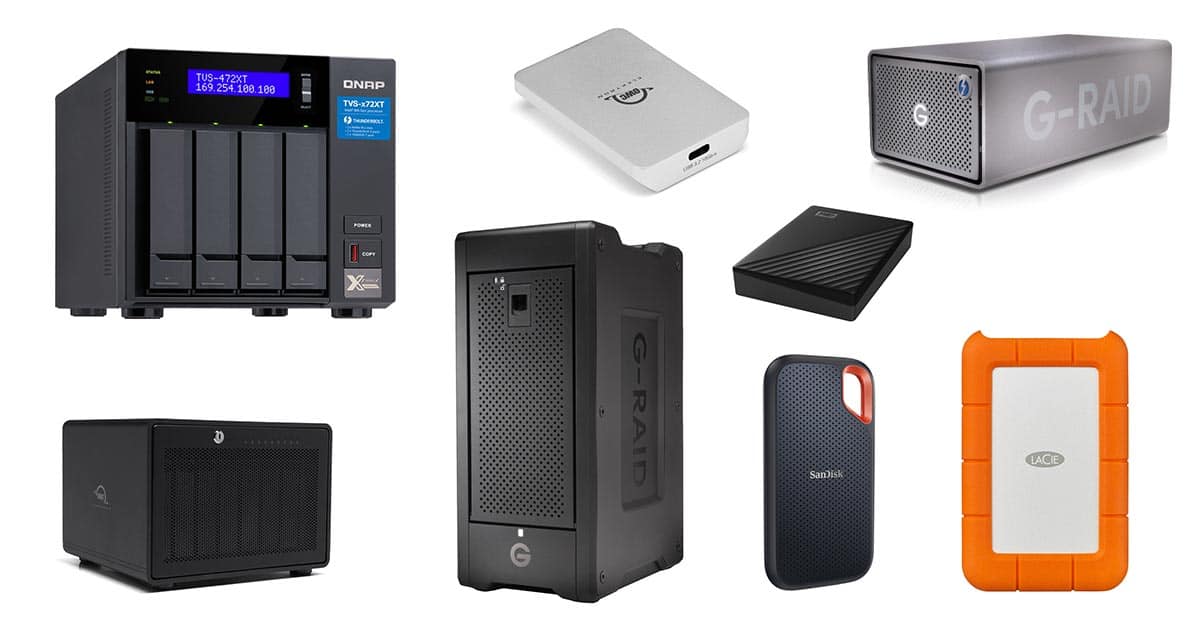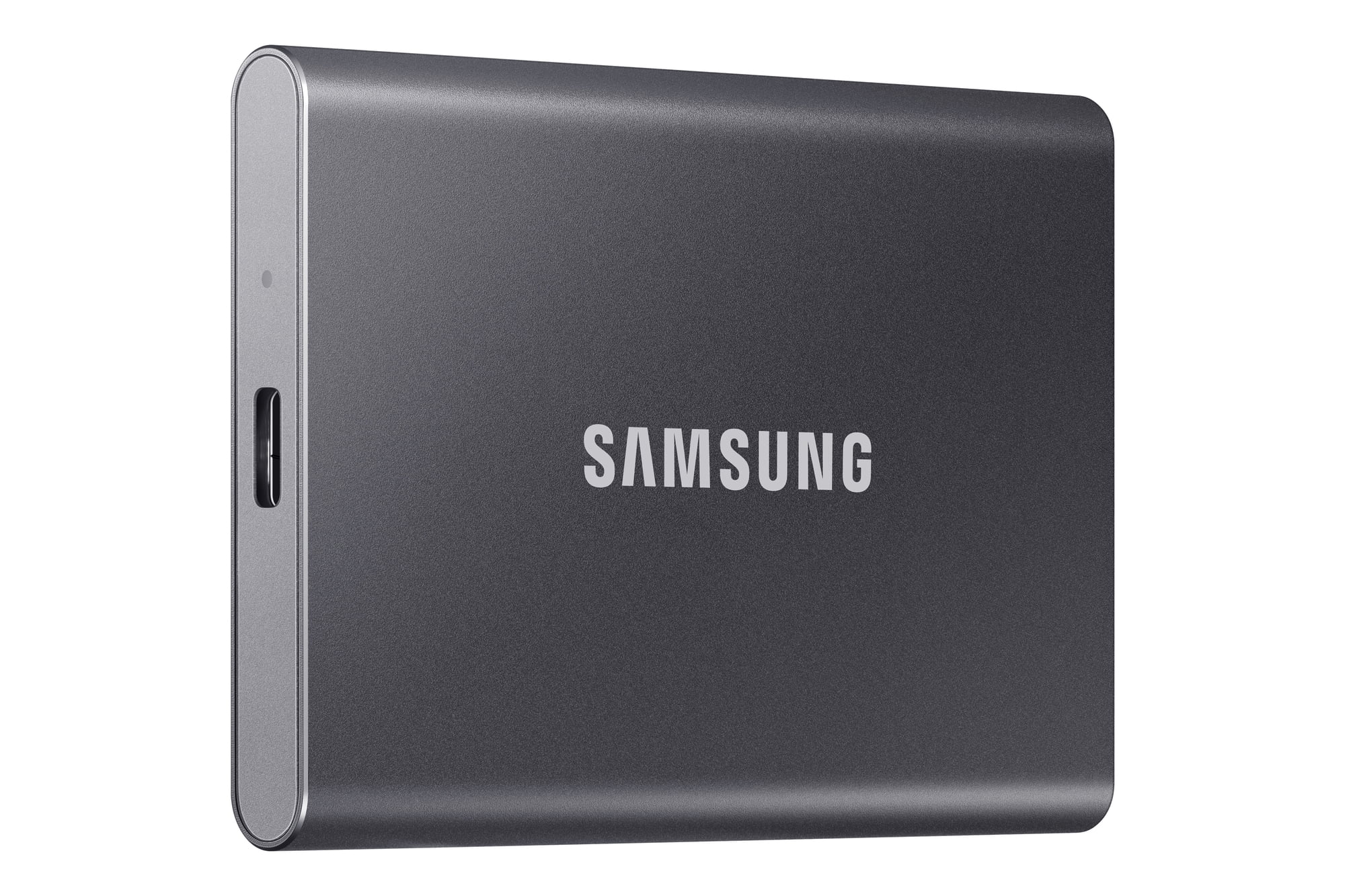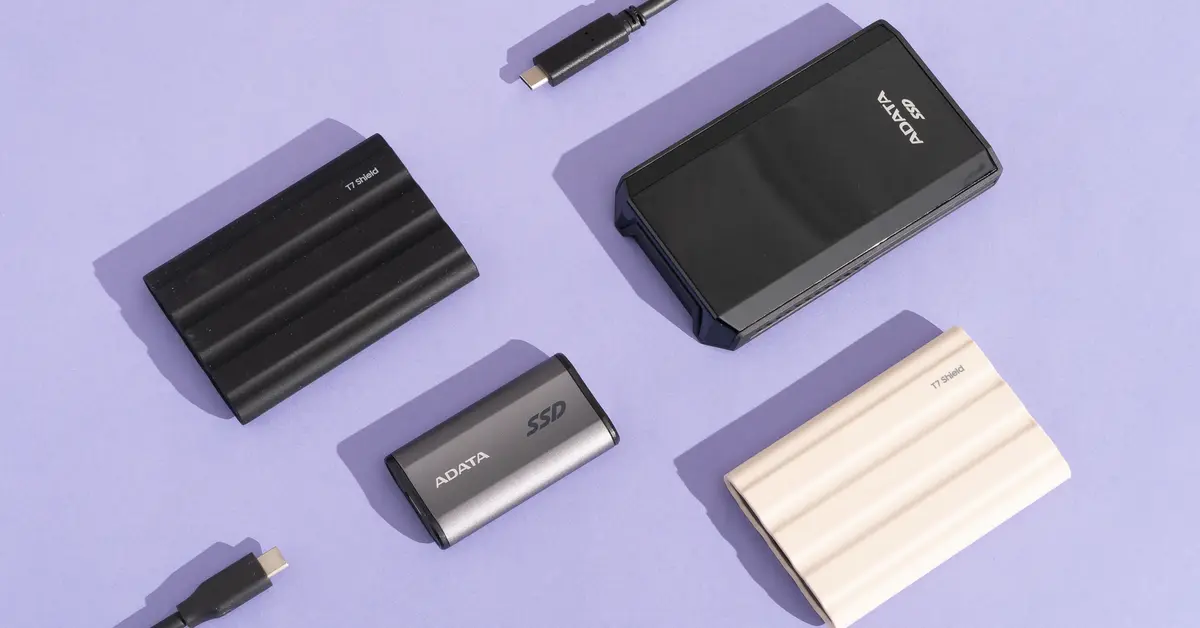Introduction
As technology continues to advance at a rapid pace, the need for efficient and reliable storage solutions has become more crucial than ever. In this digital age, where we constantly create and consume vast amounts of data, traditional storage methods often fall short in terms of speed and capacity. This is where the external Solid State Drive (SSD) comes into play.
An external SSD is a portable storage device that provides a convenient and high-performance solution for storing and accessing files. Unlike traditional hard disk drives (HDDs), which rely on spinning disks and magnetic heads to read and write data, SSDs use flash memory technology to quickly and efficiently store and retrieve information.
With the ability to transfer data at lightning-fast speeds and offer greater durability and reliability, external SSDs have revolutionized the way we store and manage our digital content. Whether you’re a professional in need of high-speed data transfer for video editing or a casual user looking to expand your storage capacity, an external SSD is a versatile and indispensable tool.
In this article, we will delve into the inner workings of an external SSD and explore the key components that make it a powerful storage solution. We will also discuss the advantages of using an external SSD over internal storage options, as well as the various interfaces available for connecting these devices to your computer or other devices.
By the end of this article, you will have a comprehensive understanding of how an external SSD works and be equipped with the knowledge to make an informed decision when choosing the right SSD for your needs.
What is an External SSD?
An external SSD, short for Solid State Drive, is a portable storage device that offers high-speed data transfer and ample storage capacity. It serves as an alternative to traditional external hard disk drives (HDDs) and provides a more efficient and reliable method of storing and accessing data.
Unlike HDDs, which use spinning disks and magnetic heads to read and write data, external SSDs utilize flash memory technology. This technology eliminates the need for moving parts, resulting in faster data transfer speeds and improved durability. An external SSD can be connected to a computer or other compatible devices through various interfaces such as USB or Thunderbolt.
One of the key advantages of an external SSD is its compact and portable design. These drives are lightweight and easily fit into a pocket or bag, making them ideal for on-the-go professionals or anyone who frequently needs to transport and access large amounts of data. Whether you’re a photographer, filmmaker, or business traveler, having an external SSD allows you to conveniently carry your files wherever you go.
External SSDs also offer significant performance improvements over HDDs. With the ability to read and write data at lightning-fast speeds, tasks such as file transfers, video editing, and running demanding applications are completed in a fraction of the time. This enhanced performance can greatly increase productivity and efficiency, especially for professionals who work with large files or require quick access to data.
In addition to speed, external SSDs provide better durability and reliability compared to HDDs. Since SSDs do not have moving parts, they are less vulnerable to mechanical failures and shocks. This makes them more resistant to damage from accidental drops or bumps, ensuring the safety of your valuable data.
Furthermore, external SSDs consume less power and generate less heat than HDDs. This not only prolongs the battery life of laptops and other portable devices but also reduces the risk of overheating, which can impact the performance and lifespan of the drive.
In summary, an external SSD is a portable storage device that offers high-speed data transfer, ample storage capacity, and enhanced durability. Its compact design and improved performance make it an essential tool for professionals and individuals who require fast and reliable storage solutions.
How does an External SSD differ from an Internal SSD?
While both external and internal SSDs serve the same purpose of providing high-speed and reliable storage, there are several key differences between the two.
The primary difference lies in their connectivity and form factor. Internal SSDs are designed to be installed directly into a computer or other compatible devices, such as gaming consoles or servers. These drives typically use standard interfaces like SATA or NVMe, and they are connected internally using cables or slots within the device’s casing.
On the other hand, external SSDs are designed to be portable and offer the flexibility to be connected to multiple devices. They come in a compact and lightweight form factor, often resembling a small rectangle or a portable flash drive. External SSDs usually connect to computers or other devices using common interfaces like USB or Thunderbolt.
Another notable difference is the power source. Internal SSDs obtain power directly from the device they are installed in, while external SSDs require an external power source, such as a USB connection or an AC adapter. Some external SSDs also offer the convenience of being bus-powered, meaning they draw power from the device they are connected to, eliminating the need for an additional power source.
Capacity and performance can also vary between external and internal SSDs. Internal SSDs generally offer higher capacities, ranging from a few hundred gigabytes to several terabytes, making them suitable for storing large amounts of data. External SSDs come in a wide range of capacities as well, but they are often limited by their compact size and portability.
When it comes to performance, internal SSDs tend to have faster transfer speeds and lower latency compared to external SSDs. This is mainly due to the direct connection to the host device and the availability of faster interfaces like NVMe. However, the performance gap between internal and external SSDs is narrowing as technology advances, and newer external SSDs equipped with high-speed interfaces like Thunderbolt 3 can offer comparable speeds to their internal counterparts.
In summary, the key differences between external and internal SSDs lie in their connectivity, form factor, power source, capacity, and performance. Internal SSDs are designed for installation inside devices, offer higher capacities and faster speeds, and draw power from the host device. External SSDs, on the other hand, are portable, connect to devices via interfaces like USB or Thunderbolt, require an external power source, and come in a smaller form factor.
Components of an External SSD
An external SSD is a complex storage device that consists of several key components working together to provide efficient and reliable data storage. Understanding these components will give you insight into the inner workings of an external SSD and help you make an informed purchasing decision.
1. Flash Memory: Flash memory is the heart of an external SSD. It is a type of non-volatile storage medium that retains data even when power is removed. The two most common types of flash memory used in SSDs are NAND and NOR. NAND flash memory is more commonly used in SSDs due to its higher density and cost-effectiveness.
2. Controller: The controller is responsible for managing the data flow between the host device and the flash memory. It plays a critical role in optimizing read and write operations, error correction, wear leveling, and other important functions that ensure the overall performance and longevity of the SSD.
3. Cache: SSDs often have a small amount of high-speed cache memory, which acts as a buffer between the controller and the flash memory. The cache temporarily stores frequently accessed data, allowing for faster read and write operations. It helps improve performance, especially when dealing with random access workloads.
4. Interface: The interface determines how the external SSD connects to your computer or other devices. The most common interfaces for external SSDs are USB and Thunderbolt. USB 3.0, USB 3.1, and USB Type-C are widely used, offering fast data transfer speeds and compatibility across a range of devices. Thunderbolt interfaces, such as Thunderbolt 3, provide even higher transfer speeds for demanding tasks.
5. Enclosure: The enclosure houses all the internal components of the external SSD and provides protection and physical connectivity. It is typically made of durable materials like aluminum or plastic and may include features like shock resistance and heat dissipation to ensure the SSD’s safety and longevity.
6. Power Supply: External SSDs require a power supply to operate. Some SSDs are bus-powered, drawing power directly from the device they are connected to, while others may require an external power source such as an AC adapter. The power supply ensures that the SSD has sufficient power to function properly and perform at its best.
In summary, the key components of an external SSD include the flash memory, controller, cache, interface, enclosure, and power supply. These components work together to deliver fast and reliable storage performance while ensuring data integrity and durability. Understanding these components will help you choose an external SSD that meets your specific needs and expectations.
Understanding Flash Memory
Flash memory is a type of non-volatile storage medium commonly used in solid-state drives (SSDs) and other portable storage devices. It is called non-volatile because it retains data even when power is removed, making it ideal for storing data in devices that need to be constantly powered on and off.
There are two primary types of flash memory used in SSDs: NAND and NOR. NAND flash memory is the most prevalent due to its higher density and lower cost. It consists of a series of connected memory cells, which store data in an array of floating-gate transistors. Each cell can store multiple bits of information, allowing for greater data storage capacity compared to NOR flash memory.
Flash memory operates on the principle of electrical charges. These charges, stored in the floating gate of each memory cell, represent the data stored. To read the data, a voltage is applied to the control gate, and the resulting current flow is measured. If the presence or absence of charge is detected, it determines whether the bit is read as a 1 or a 0.
One of the challenges with flash memory is that each cell has a limited lifespan in terms of how many times it can be programed and erased, known as program-erase (P/E) cycles. Over time, with repeated program and erase operations, the floating gates can degrade, impacting the reliability and performance of the flash memory. To combat this, SSDs implement wear-leveling algorithms that distribute the wear evenly across the memory cells, extending the lifespan of the SSD and ensuring consistent performance.
Another important aspect of flash memory is its speed. SSDs with flash memory offer significantly faster read and write speeds compared to traditional hard disk drives (HDDs) due to the absence of moving parts. This results in quicker access to data and faster transfer speeds, improving overall system performance.
It is worth noting that SSDs use a technique known as garbage collection to maintain efficiency and prevent performance degradation. When data is deleted or moved within the SSD, empty memory cells are left behind. The garbage collection process consolidates these empty cells and prepares them for reuse, ensuring that the SSD operates optimally and maintains its performance over time.
In summary, flash memory is a key component of SSDs that offers non-volatile storage, fast access times, and high data storage density. While it has limitations in terms of program-erase cycles, advanced algorithms such as wear-leveling and garbage collection are implemented to mitigate these effects and ensure the longevity and reliable performance of SSDs.
The Role of the Controller
The controller is a vital component in an external SSD that plays a crucial role in managing and optimizing the performance of the solid-state drive. It acts as the bridge between the host device and the NAND flash memory, handling various operations and ensuring the efficient transfer of data.
One of the primary functions of the controller is managing the read and write operations of the SSD. It receives commands from the host device, such as read requests or write instructions, and translates them into actions that the flash memory can understand. The controller determines the allocation of data within the NAND flash memory and functions as the intermediary between the host and the actual storage cells.
In addition to managing data transfer, the controller is responsible for error correction. Due to various factors such as electrical noise, wear and tear on the flash memory, or soft errors that can occur during data transmission, errors can occur in the stored data. The controller uses error correction algorithms and techniques to detect and correct these errors, ensuring data integrity and preventing data loss or corruption.
Another critical task of the controller is wear leveling. NAND flash memory has a limited lifespan, with a finite number of program-erase (P/E) cycles before the memory cells degrade. Wear leveling ensures that data is distributed evenly across the memory cells, avoiding excessive wear on specific areas. By evenly spreading the writes across the cells, the controller helps prolong the lifespan of the SSD and maintain consistent performance throughout its usage.
The controller also plays a role in managing the performance and efficiency of the SSD. It optimizes data pathways, minimizes latency, and maximizes the utilization of the available NAND flash memory. By implementing advanced algorithms and techniques, such as read-ahead caching and write combining, the controller enhances the speed and efficiency of data transfer, ultimately improving the overall performance of the SSD.
Furthermore, the controller is responsible for various housekeeping tasks within the SSD. It manages performance monitoring and reporting, including features like SMART (Self-Monitoring, Analysis, and Reporting Technology) that provide information about the health and status of the SSD. The controller also handles functions like power management, ensuring optimal power consumption and efficiency of the SSD.
In summary, the controller is a critical component in an external SSD, responsible for managing data transfer, error correction, wear leveling, performance optimization, and various other important tasks. Its efficient operation and advanced algorithms ensure the reliability, speed, and overall performance of the SSD. Without a capable controller, an external SSD would not be able to deliver its full potential as a high-speed, reliable, and efficient storage solution.
Advantages of an External SSD
External SSDs offer several key advantages over traditional storage solutions, making them an appealing choice for individuals and professionals alike. Here are some of the benefits that come with using an external SSD:
1. Fast Data Transfer Speeds: External SSDs leverage flash memory technology, providing significantly faster read and write speeds compared to traditional hard disk drives (HDDs). This means faster data transfers, quicker access to files, and reduced wait times during file operations.
2. Portability and Convenience: External SSDs are designed with portability in mind. They are compact, lightweight, and easily fit into a pocket or bag, allowing you to carry your data wherever you go. This makes them ideal for on-the-go professionals, travelers, and anyone who needs to access their data while on the move.
3. Durability and Shock Resistance: Since external SSDs do not have any moving parts like HDDs, they are more resistant to shocks and vibrations. This makes them more durable and less prone to damage from accidental drops or impacts, ensuring the safety of your valuable data.
4. Enhanced Reliability: External SSDs are known for their reliability. With no mechanical components to wear out or fail, external SSDs have a lower chance of experiencing data loss due to mechanical issues. Additionally, advanced error correction algorithms in the SSD controller help maintain data integrity and prevent corruption.
5. Energy Efficiency: External SSDs consume less power than HDDs, resulting in improved energy efficiency. This not only helps prolong the battery life of laptops and portable devices but also reduces the heat generated by the drive, leading to a cooler and more stable operating environment.
6. Noiseless Operation: Unlike HDDs, which produce noise due to the spinning platters and moving heads, external SSDs operate silently. This attribute makes them ideal for environments where noise reduction is a priority, such as recording studios or quiet office spaces.
7. Compatibility: External SSDs are compatible with a wide range of devices, including laptops, desktops, gaming consoles, and even smart TVs. They can connect via various interfaces like USB and Thunderbolt, ensuring seamless compatibility with different devices and operating systems.
8. Expansion of Storage Capacity: External SSDs offer the flexibility to add additional storage capacity to your device without the need to open or upgrade the existing internal storage. This is particularly beneficial for devices like laptops or game consoles that have limited internal storage options.
In summary, external SSDs provide numerous advantages over traditional storage solutions. They offer fast data transfer speeds, convenience, durability, reliability, energy efficiency, silent operation, compatibility, and the ability to expand storage capacity. These advantages make external SSDs a popular choice for individuals and professionals seeking high-performance, portable, and reliable storage solutions.
Types of External SSD Interfaces
External SSDs come in various interface options that determine how they connect to your computer or other devices. The interface of an external SSD plays a crucial role in data transfer speeds, compatibility, and overall performance. Here are some of the commonly used types of interfaces for external SSDs:
1. USB 3.0: USB 3.0, also known as SuperSpeed USB, offers significantly faster data transfer rates compared to its predecessor, USB 2.0. With theoretical transfer speeds of up to 5 gigabits per second (Gbps), USB 3.0 allows for quick and efficient data transfer between your external SSD and your computer. USB 3.0 is backward compatible with USB 2.0, so you can still use your external SSD with older devices, albeit at slower speeds.
2. USB Type-C: USB Type-C is a versatile connector that has gained popularity in recent years. It offers high data transfer speeds, similar to USB 3.0 or even faster with the implementation of USB 3.1 or USB 3.2 Gen 2 standards. USB Type-C is reversible, meaning you can plug it in either way, making it more convenient to use. It also supports other features such as power delivery and video output, making it a versatile choice for connecting external SSDs to a wide range of devices.
3. Thunderbolt 3: Thunderbolt 3 is a high-speed interface developed by Intel. It offers the fastest data transfer speeds among the commonly used external SSD interfaces, with theoretical rates of up to 40 Gbps. Thunderbolt 3 uses the USB-C connector and provides more bandwidth for data transfer, allowing for lightning-fast file transfers, storage, and video editing. Thunderbolt 3 also supports daisy-chaining multiple devices and can provide power to connected devices, making it a popular choice for professional users who require high-performance external SSDs.
4. eSATA: eSATA (external Serial Advanced Technology Attachment) is an interface specifically designed for external storage devices. It provides high-speed data transfer rates, comparable to USB 3.0 or even faster, depending on the implementation. However, eSATA is not as widely supported as USB or Thunderbolt, and it requires an external power source to operate. Despite its limited adoption, eSATA can be a viable option for users who require high-speed data transfer and have devices with eSATA ports.
5. FireWire: FireWire, also known as IEEE 1394, was popular in the past but has been largely replaced by USB and Thunderbolt. It offers fast data transfer speeds and can be found on older computers and devices. However, FireWire compatibility is limited, and it is not as widely supported as other interface options. For most users, USB or Thunderbolt interfaces would provide more versatility and compatibility.
In summary, there are several types of interfaces available for external SSDs, including USB 3.0, USB Type-C, Thunderbolt 3, eSATA, and FireWire. Each interface has its own advantages in terms of data transfer speeds, compatibility, and features. When choosing an external SSD, it is important to consider the interface that best suits your needs and the compatibility with your devices.
USB 3.0 vs. USB Type-C
When it comes to external SSD interfaces, two commonly compared options are USB 3.0 and USB Type-C. Both interfaces offer high-speed data transfer and versatile connectivity, but there are some key differences between them. Let’s explore the characteristics of each interface and what sets them apart:
USB 3.0: USB 3.0, also known as SuperSpeed USB, offers significantly faster data transfer rates compared to its predecessor, USB 2.0. It delivers theoretical transfer speeds of up to 5 gigabits per second (Gbps), allowing for quick and efficient data transfer between your external SSD and your computer. USB 3.0 is backward compatible with USB 2.0, which means you can still use your external SSD with older devices, although at slower speeds. It uses a standard rectangular USB-A connector that is familiar to most users.
One of the advantages of USB 3.0 is its widespread adoption. Most computers and devices today come equipped with USB 3.0 ports, ensuring compatibility and ease of use. USB 3.0 cables are also readily available, making it convenient to find replacements or additional cables if needed. Another advantage is that USB 3.0 ports can provide power to connected devices, eliminating the need for separate power adapters in many cases.
USB Type-C: USB Type-C is a newer and more versatile connector that has gained popularity in recent years. It offers high data transfer speeds, similar to USB 3.0 or even faster with the implementation of USB 3.1 or USB 3.2 Gen 2 standards. USB Type-C is a reversible connector, meaning you can plug it in either way, making it more convenient to use. It also supports other features such as power delivery, allowing for faster charging of devices, and video output, making it suitable for connecting external SSDs to displays or TVs.
One of the main advantages of USB Type-C is its versatility. The connector is smaller and more compact than USB-A, making it suitable for thinner devices like ultrabooks and tablets. The USB Type-C port can support multiple protocols, including USB 3.0, Thunderbolt 3, and DisplayPort, providing a wide range of connectivity options. USB Type-C cables can also be used for charging, data transfer, and video output, reducing the need for multiple cables and adapters.
It is worth noting that USB Type-C is not always synonymous with USB 3.0 or high-speed data transfer. While many USB Type-C ports support USB 3.0 or higher standards, some devices may come equipped with USB Type-C ports that only support USB 2.0 speeds. Therefore, it is important to check the specifications of your devices and cables to ensure they support the desired data transfer speeds.
In summary, USB 3.0 and USB Type-C are both excellent options for connecting external SSDs. USB 3.0 offers fast data transfer speeds, wide compatibility, and is widely available on various devices. USB Type-C, on the other hand, provides versatility, reversible connectors, and the ability to support various protocols like USB 3.0, Thunderbolt 3, and DisplayPort. When choosing between USB 3.0 and USB Type-C, consider the compatibility with your devices, desired data transfer speeds, and the specific features you require.
Thunderbolt 3
Thunderbolt 3 is a high-speed interface developed by Intel that offers exceptional data transfer speeds and versatile connectivity options. It provides a significant advancement over previous generations of Thunderbolt technology, delivering unparalleled performance and functionality for external SSDs and other compatible devices.
One of the key advantages of Thunderbolt 3 is its incredible data transfer speeds. With theoretical speeds of up to 40 gigabits per second (Gbps), Thunderbolt 3 is significantly faster than other commonly used interfaces, such as USB 3.0 or USB Type-C. This high bandwidth allows for lightning-fast file transfers, storage, video editing, and other data-intensive tasks, making Thunderbolt 3 an appealing choice for professionals who require high-performance external SSDs.
Another notable feature of Thunderbolt 3 is its versatility. Thunderbolt 3 uses the same USB Type-C connector, making it compatible with a wide range of devices that support USB Type-C. However, unlike USB Type-C, Thunderbolt 3 offers more capabilities. In addition to high-speed data transfer, Thunderbolt 3 supports protocols like USB 3.1, DisplayPort, and even PCIe, enabling connections to external displays, docking stations, and other peripherals. This versatility eliminates the need for multiple ports and cables, simplifying connectivity and enhancing productivity.
One of the most compelling features of Thunderbolt 3 is its ability to daisy chain multiple devices. With Thunderbolt 3, you can connect multiple external SSDs, displays, and other Thunderbolt-compatible devices in a single chain. This eliminates the need for a separate port for each device, providing a clean and efficient setup. Each device in the chain can transmit data, power, and video signals, offering a seamless and streamlined experience.
Thunderbolt 3 also provides power delivery capabilities, which means you can simultaneously power and charge your device while transferring data through a single Thunderbolt 3 cable. This can be particularly useful for laptops or other portable devices, reducing cable clutter and enabling more efficient use of available ports.
It is important to note that Thunderbolt 3 offers backward compatibility with earlier versions of Thunderbolt, allowing you to connect Thunderbolt 1 or Thunderbolt 2 devices using an adapter. However, the data transfer speeds will be limited to the capabilities of the older Thunderbolt versions.
In summary, Thunderbolt 3 is a high-performance interface that offers exceptional data transfer speeds, versatile connectivity, and the ability to daisy chain multiple devices. Its compatibility with USB Type-C and a wide range of peripherals, along with power delivery capabilities, makes Thunderbolt 3 an attractive choice for professionals who require fast and flexible external SSD connectivity with their devices.
Choosing the Right External SSD for Your Needs
Choosing the right external SSD is essential to ensure that it meets your specific requirements for storage capacity, speed, compatibility, and portability. Here are some factors to consider when selecting an external SSD:
1. Storage Capacity: Determine your storage needs based on the types of files you regularly work with. If you mainly deal with large media files or require ample storage for backups, opt for an external SSD with higher capacities, such as 1TB or 2TB. However, if you primarily work with documents or require a portable solution, lower capacity options may suffice.
2. Interface: Consider the interface options available on your devices and choose an external SSD that offers compatibility. USB 3.0 and USB Type-C are widely supported and provide fast data transfer speeds. If you require even higher speeds and versatile connectivity options, consider Thunderbolt 3. Select an interface that suits your device compatibility and performance needs.
3. Data Transfer Speed: Pay attention to the data transfer speeds specified by the manufacturer. Faster transfer speeds result in quicker file transfers and better performance. SSDs with USB 3.0 or Thunderbolt 3 interfaces offer significantly faster speeds compared to older interface standards like USB 2.0.
4. Portability: Consider the size, weight, and design of the external SSD. If you frequently travel or work on-the-go, a portable and lightweight SSD is essential. Look for compact designs that can easily fit in your bag or pocket while still offering the necessary storage capacity.
5. Durability: Assess the level of durability required based on your usage scenarios. If you expect your external SSD to endure rough handling or potential drops, choose a model with shock-resistant features and durable build materials like aluminum or ruggedized enclosures.
6. Price: Consider your budget and the value offered by different external SSD models. Compare prices, storage capacities, and features to find the right balance between affordability and performance. Keep in mind that higher-capacity and faster SSDs tend to be more expensive.
7. Brand Reputation: Research and consider reputable brands known for their quality and reliability. Established brands often provide better customer support, warranty coverage, and firmware updates, ensuring a positive user experience and performance longevity.
8. Reviews and Recommendations: Read reviews from reliable sources and seek recommendations from trusted individuals or online communities. Real-world experiences and feedback can offer valuable insights into the performance, reliability, and overall satisfaction with different external SSD models.
By considering these factors, you can make an informed decision and select the external SSD that best suits your needs. Finding the right balance between capacity, speed, compatibility, portability, durability, price, and brand reputation will ensure that your external SSD fulfills your expectations and enhances your storage and data transfer experience.
Conclusion
External SSDs have transformed the way we store, access, and transfer data. With their fast data transfer speeds, reliable performance, and convenient portability, they have become an indispensable tool for professionals and individuals seeking efficient storage solutions.
In this article, we explored the key components that make up an external SSD, including the flash memory, controller, and various interfaces such as USB 3.0, USB Type-C, and Thunderbolt 3. We also discussed the advantages of using an external SSD, such as fast data transfer speeds, portability, durability, and enhanced reliability.
When choosing an external SSD, it is important to consider factors such as storage capacity, interface compatibility, data transfer speeds, portability, durability, price, and brand reputation. By carefully weighing these factors, you can find the ideal external SSD that meets your specific needs and requirements.
Whether you are a professional seeking high-performance storage for intensive tasks, a student needing extra space for your assignments and projects, or a casual user looking for a reliable backup solution, there is an external SSD available for everyone.
With the continuous advancements in technology, we can expect even faster, more efficient, and higher-capacity external SSDs in the future. As the demand for storage solutions grows, manufacturers will continue to innovate and offer improved features and capabilities.
As you venture into the world of external SSDs, embrace the benefits they provide and enjoy the seamless storage experience they offer. With their speed, reliability, and convenience, external SSDs are the future of data storage and management.







